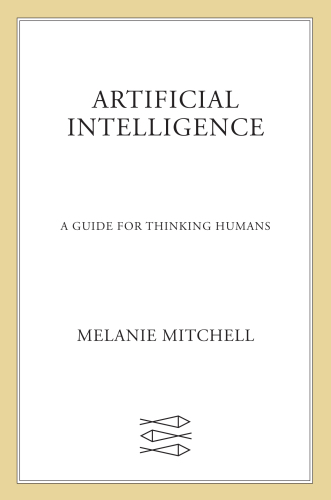
Artificial Intelligence
A Guide for Thinking Humans
کتاب های مرتبط
- اطلاعات
- نقد و بررسی
- دیدگاه کاربران
نقد و بررسی

August 5, 2019
Mitchell (Complexity: A Guided Tour), a Portland State computer science professor, ably illustrates the current state of artificial intelligence, debunking claims about computers that match or surpass human intelligence. She begins with a meeting that she attended with Google’s AI team alongside her former PhD advisor, Douglas Hofstadter, author of Gödel, Escher, Bach, who revealed he was “terrified” that a “superficial set of brute-force algorithms could explain the human spirit.” Mitchell then examines various areas of AI research, including image recognition, question answering, game playing, and translation. Each example yields similar results; namely, that computers can be trained to master specific tasks—as with the vaunted Jeopardy! win for IBM’s Watson program—but not to learn new abilities in general or truly understand meaning. Responding to claims by AI developers, Mitchell suggests that machines can never “fully understand human language until they have human-like common sense.” Moreover, AI programs remain susceptible to errors and hacking, in part because they are surprisingly easily fooled. Taking care to keep the text accessible, Mitchell lightens things with amusing facts, such as how Star Trek’s ship computer remains the gold standard for many AI researchers. This worthy volume should assuage lay readers’ fears about AI, while also reassuring people drawn to the field that much work remains to be done.

August 15, 2019
A nonmathematical yet still somewhat technical explanation of how researchers are going about achieving artificial intelligence. This is not another cheerful or alarming exercise in futurology. Science writer Mitchell (Computer Science/Portland State Univ.; Complexity: A Guided Tour, 2011, etc.) begins by wondering if an intelligent machine would "require us to reverse engineer the human in all its complexity or is there a shortcut, a clever set of yet unknown algorithms, that will produce what we recognize as full intelligence." She then explains what researchers have done so far. Beginning in the 1950s, when success seemed just around the corner, there was symbolic AI, which involved programmers using symbols that humans could understand to solve straightforward logical problems. This led to "expert systems," which used massively detailed instructions to make decisions in narrow fields such as disease diagnosis better than human experts. By the 1980s, the limitations of AI became more obvious. Today, concepts such as "deep learning," relying on artificial neural networks, evaluate information without following rigid instructions. Despite the name and hype (and accomplishments--e.g., being unbeatable at Jeopardy), machine and human learning are not comparable. Highly advanced computers are "trained" by immense inputs, made possible only with the advent of 21st-century "big data." After evaluating their outputs, programmers retrain them to improve their accuracy. Like humans, they are not perfect. Mitchell maintains that true superintelligence will not happen until machines acquire human qualities such as common sense and consciousness. These are nowhere in sight despite recent spectacular advances--in translation, facial recognition, etc.--and the author believes that this absence makes it unlikely that one anticipated breakthrough, true driverless cars, will happen any time soon. "It's worth remembering," she writes, "that the first 90 percent of a complex technology project takes 10 percent of the time and the last 10 percent takes 90 percent of the time." Although sometimes too abstruse, this is mostly a surprisingly lucid introduction to techniques that are making computers smarter.
COPYRIGHT(2019) Kirkus Reviews, ALL RIGHTS RESERVED.

September 1, 2019
Mitchell (computer science, Portland State Univ.; Complexity: A Guided Tour) aims to impart understanding of the new wave of artificial intelligence (AI) influencing all aspects of digital living. The content straddles both a historical and a contemporary perspective, detailing approaches to AI development in the post-World War II era, including expert systems and reasoning, while also covering the now popular approach of deep learning, its early dismissal by the field, and subsequent validation. This historical grounding makes for a worthy and compelling narrative in itself. There are also ample contemporary topics explored in great detail, such as AI applications in image recognition, autonomous vehicles, voice recognition, and the impressive translation that today's popular search engines now provide. VERDICT This work will mainly interest technologists who are exploring the computational and technological foundations of AI and the present implications these bring to the digital era.--Jim Hahn, Univ. Lib., Univ. of Illinois, Urbana
Copyright 2019 Library Journal, LLC Used with permission.

























دیدگاه کاربران